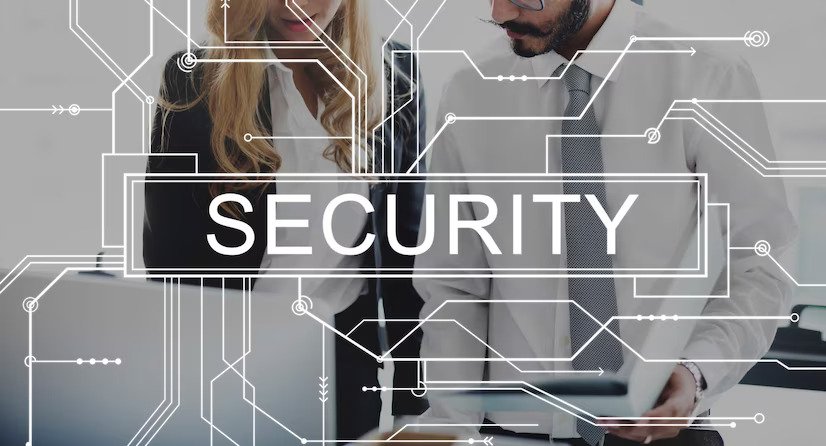
In today’s digital age, online security is more important than ever, particularly in the financial industry, where the stakes are high. One of the critical tools that banks and other financial institutions use to enhance online security is 2-factor verification.
This security measure requires users to provide two separate forms of authentication before accessing their accounts. It is done by providing an additional layer of protection against online threats.
Banks are mainly concerned with 2-factor verification because of the sensitive nature of the information they handle. These are personal and financial information, which makes them a prime target for cyberattacks.
Why are banks so concerned with 2-factor verification?
Banks are constantly working to improve their security measures. It is to protect their customers’ sensitive information from online threats. Customers need to understand why banks are concerned with 2-factor verification. It can help them take steps to protect their own personal and financial information.
By being aware of the benefits of 2-factor verification, customers can make informed decisions about their online security and take proactive measures to safeguard their data.
In particular, this is relevant for age verification, as banks must comply with regulatory requirements for age verification services and systems in specific industries. Customers must understand the benefits of 2-factor verification, particularly when protecting sensitive information such as age verification data.
This article will explore the importance of 2-factor verification in detail. We will also discuss its benefits for both banks and their customers.
Benefits of Using 2FA in Financial Institutions

2FA can benefit the bank and its customers. Here are seven benefits of using 2FA at banks:
- Increased Security
2-factor verification provides an extra layer of security for customer accounts. They require users to provide a second form of authentication in addition to their password. It helps reduce the risk of unauthorized access to customer accounts. This can help prevent fraudulent activity and financial loss.
- Reduced Risk of Identity Theft
It becomes much more difficult for identity thieves to gain access to customer accounts. Even if a thief manages to steal a customer’s password, they won’t be able to access the account without the additional authentication factor.
- Improved Customer Trust
Banks that implement 2-factor verification can improve customer trust by demonstrating their commitment to security. Customers are more likely to feel secure knowing their bank is taking additional steps to protect their accounts.
- Compliance with Regulations
Many countries have regulations that require banks to implement strong authentication measures to protect customer data and prevent fraud. By implementing 2-factor verification, banks can demonstrate their compliance with these regulations.
- Faster Resolution of Fraud Cases
Banks can avoid the costs associated with investigating and resolving fraud cases by preventing fraudulent activity. Additionally, banks can reduce the risk of reputational damage resulting from data breaches and other security incidents by improving security.
- Increased Convenience
While 2-factor verification requires an additional step in the login process, it can increase convenience for customers by providing an extra layer of protection against account compromises. This can reduce the need for customers to constantly change their passwords or deal with account lockouts due to suspicious login attempts.
- Protection for High-Value Transactions
For customers who conduct high-value transactions, 2-factor verification provides an extra layer of protection against unauthorized access. This can help prevent fraudulent activity and reduce the risk of financial loss for both the customer and the bank.
Three Types of Verification

1. Knowledge-based verification
Standard 2-factor authentication (2FA) used by banks and financial institutions often involves users answering security questions. However, this approach has limitations.
- Firstly, the information used for security questions is often publicly available or easily discovered online, making it vulnerable to fraudsters.
- Secondly, it can be frustrating and time-consuming for users, leading to account lockouts and lengthy recovery processes.
- As a result, alternative forms of 2FA, such as biometric authentication and one-time passwords, are being explored for their higher security and convenience.
2. Possession-based verification
It is another common form of 2-factor authentication that banks and other financial institutions use to enhance security. This type of verification relies on something the user possesses, such as a one-time password (OTP), an authentication app, or a physical token.
It is an addition to their username and password. It is also used in online age verification or other forms of verification to check the legitimacy of the user.
- One-time passwords (OTPs)
OTPs are temporary codes sent to the user via text or email. The user must enter the code within a specified timeframe to access their account. OTPs can be effective because they are only valid for a short period. It can only be used once, reducing the risk of unauthorized access. However, OTPs can also be intercepted or stolen by cybercriminals, particularly if the user’s device or network has been compromised.
- Authentication Apps
Google Authenticator generates time-based OTPs that are only valid temporarily. This kind of app is often more secure than traditional OTPs. They are generated locally on the user’s device and do not rely on SMS or email, which can be intercepted. However, users may be at risk of losing their devices or accidentally deleting the app, which could lead to losing access to their accounts.
- Physical tokens
Physical tokens, such as key fobs or smart cards, are another form of possession-based verification. These devices generate unique codes that the user must enter to access their account. Physical tokens can be very secure because they are not connected to the internet and cannot be hacked remotely. However, physical tokens can be expensive to produce and distribute. Users may be at risk of losing or damaging the device, which could lead to losing access to their account.
Possession-based verification can be an effective tool for 2-factor authentication. Each type has its benefits and drawbacks. Banks and other financial institutions must weigh the trade-offs between security, cost, and convenience when choosing suitable possession-based verification for their customers.
3. Inherent-based verification
Biometric authentication, also known as biometric 2-factor authentication, relies on the user’s unique physical characteristics like fingerprints, facial recognition, or a voiceprint to verify their identity. It offers increased security and convenience, making it popular in the financial and business industries.
One advantage of biometric authentication is that it is difficult to fake or replicate, unlike passwords or security questions. Biometric data is unique to individuals, making it highly secure.
Additionally, biometric authentication eliminates the need for users to remember passwords or carry physical tokens. Their biometric data is stored on their device or in the cloud, enhancing the authentication process’s speed and ease of use and improving the user experience.
Conclusion
Security breaches and identity theft are becoming increasingly common. It is a must for banks and other financial institutions to take steps to protect their customers’ data. 2-factor verification is a critical component of online security. It provides an additional layer of protection against fraud and unauthorized access. The three main types of 2-factor verification are knowledge-based, possession-based, and inherent-based verification.
Customers must enhance their online security by enabling 2-factor verification on their accounts, using strong passwords, and being cautious when sharing personal information online. By working with banks and other financial institutions, individuals can help create a safer and more secure online environment for everyone.
Read Also:






